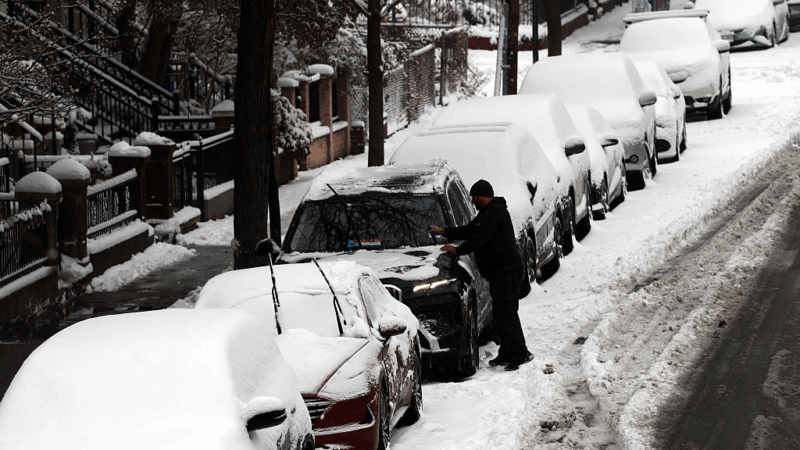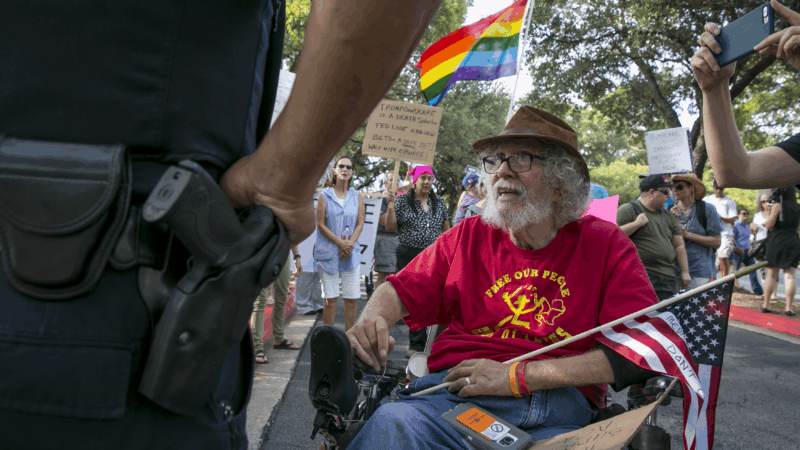From Foster Care To College: A Little Help Bettering The Odds
 Birmingham– Whether it’s summer, spring, or fall term, some young people have trouble adjusting to campus life. College students coming from foster care face extra hurdles: 70 percent want to get a degree, but roughly three percent graduate by age 25. For the third and final part of the Southern Education Desk series “From Foster Care To College: Extra Help For Extra Hurdles,” WBHM’s Dan Carsen recently went to the University of Alabama in Tuscaloosa to learn about a new program that’s trying to better the odds:
Birmingham– Whether it’s summer, spring, or fall term, some young people have trouble adjusting to campus life. College students coming from foster care face extra hurdles: 70 percent want to get a degree, but roughly three percent graduate by age 25. For the third and final part of the Southern Education Desk series “From Foster Care To College: Extra Help For Extra Hurdles,” WBHM’s Dan Carsen recently went to the University of Alabama in Tuscaloosa to learn about a new program that’s trying to better the odds:
To understand this story, you have to understand something that happened in 2010.
It’s fall. Students arrive on campus in SUVs driven by family who help unload furniture and other things they’ll need for their
new lives. But one young man, who came from a foster home and had not been to orientation, shows up
holding nothing but his admissions letter.
Clearly he wasn’t getting the information or support many college students take for granted.
Administrators assumed that if there was one student like him, there were more. Out of that grew the
Alabama REACH program, founded last summer.
Senior Kenyetta Windmon-Smith says it’s been a blessing in her final year of college. She takes a break from studying for finals in the student
center to talk.
“I’ve been in foster care since age one,” she says. “My mom was twelve when she had me. I
struggled from all the emotional stuff that was going on around me. I became withdrawn and
depressed.”
Senior Maurice Foster was placed with a foster family in third grade when his father, a Vietnam vet
with post-traumatic stress disorder and drug problems, could no longer manage. In tenth grade, Maurice and his two brothers
had to move into a group home because of their behavior.
“My sister was somewhere else, which really was a problem for us, ’cause we couldn’t talk to
her or anything like that,” he recalls. “I guess we got … I guess you would define us as ‘problem children’ — so we got
kicked out.”

The hurdles these students face on campus may seem small compared to what they’ve already
overcome, but they’re not insignificant. Some don’t have a home to return to during holiday breaks.
Some face a stigma and lowered expectations.
Says Windmon-Smith, “I don’t like people to do for me unless they really want to do it out of their heart. I
don’t want nobody feeling sorry for me. ‘Cause we get a lot of, ‘You don’t look adopted. You don’t look [like you’re]
in foster care.’ People treat you certain kinda’ ways… Just being here is something no one else in my
family has done.”
But she isn’t alone: she’s got Alabama REACH. The goal is to support foster students
through graduation. Funded by the university, grants, and donations, it serves about 25 students, and
there are plans to expand. Among other things, the program gets the students together. Maurice Foster appreciates the difference between his first few years of college and the last year, when he had
Alabama REACH:
“I got the opportunity to see a lot of kids who’ve come from the same background as me,
and I think that camaraderie is the biggest thing that I’ve gained from the program.”
Alabama REACH also sets students up with mentors, tutors, counselors and something research says is
vital in helping foster kids get through college: information on financial aid. It also provides “little”
things — a food pantry, gas cards, and help for common situations like what Windmon-Smith faced:
“The first couple years here I didn’t get all my books because I couldn’t afford to
buy all my books. So just by getting a little extra help, now I can get the books. And anything like
bedding, coats — winter coats were a big deal. Someone donated us an awesome coat, a big heavy-duty
coat for the winter … little things that most people would take for granted.”
The program has a student-directed community service component, too. So far, they’ve volunteered for
Habitat for Humanity and a senior center. But the students often want to “give back” beyond that. Freshman Michaela Sanderson was eleven when she saw her mom shoot herself; now she wants to be a
social worker.
“My heart was really set on working with addicts. That’s run in my family a lot,” she says. “But I’ve
known that I just wanted to help people and pursue a career in that.”
The program has three pillars: “reach back,” encouraging future college students; “reach up,”
supporting current college students; and “reach out,” making connections with the larger community.
Judging by the students in this story, all three of whom who aced their finals, it appears to be an
effective combination.
Memory loss: As AI gobbles up chips, prices for devices may rise
Demand for memory chips currently exceeds supply and there's very little chance of that changing any time soon. More chips for AI means less available for other products such as computers and phones and that could drive up those prices too.
Brigitte Bardot, sex goddess of cinema, has died
Legendary screen siren and animal rights activist Brigitte Bardot has died at age 91. The alluring former model starred in numerous movies, often playing the highly sexualized love interest.
For Ukrainians, a nuclear missile museum is a bitter reminder of what the country gave up
The Museum of Strategic Missile Forces tells the story of how Ukraine dismantled its nuclear weapons arsenal after independence in 1991. Today many Ukrainians believe that decision to give up nukes was a mistake.
Jeffrey R. Holland, next in line to lead Church of Jesus Christ of Latter-day Saints, dies at 85
Jeffrey R. Holland led the Quorum of the Twelve Apostles, a key governing body. He was next in line to become the church's president.
Winter storm brings heavy snow and ice to busy holiday travel weekend
A powerful winter storm is impacting parts of the U.S. with major snowfall, ice, and below zero wind chills. The conditions are disrupting holiday travel and could last through next week.
Disability rights advocate Bob Kafka dead at 79
Bob Kafka was an organizer with ADAPT (American Disabled for Attendant Programs Today), a group which advocates for policy change to support people with disabilities.








